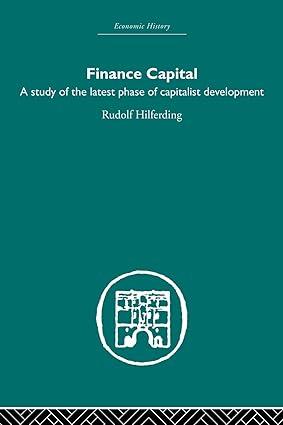Question
In 1952, singer Nadine Tipper entered an agreement with AAC to work on the animated film called Waiting Fox. Nadine Tipper wrote six songs, sang
In 1952, singer Nadine Tipper entered an agreement with AAC to work on the animated film called Waiting Fox. Nadine Tipper wrote six songs, sang three, and was the voice for four characters in the 1955 film. Tipper was paid $3,500 for her participation. AAC retained all rights to revenues earned from distributing the movie to theatres and television broadcasting companies in domestic and foreign markets. Tipper retained the right to residual payments at 12.5% for such items as phonographic recordings sold to the public.
Specifically, the contract gave AAC the right to distribute the film including the rights to any other technology yet to be invented, but 12(b) of the agreement provided that
Anything herein to the contrary notwithstanding, it is agreed that nothing in this agreement contained shall be construed as granting to us (AAC) the right to make phonograph recordings and/or transcriptions for sale to the public, wherein results or proceeds of your services hereunder are used.
In 1987 AAC began distributing videocassettes of the film. Tipper sued in March 1988, claiming she was entitled to $9 million. Specifically, she claimed that she was entitled to 12.5% of the profits AAC generated from the sales of videocassettes of Waiting Fox on the basis that the distribution of the videocassettes was not authorized by the 1952 contract. AAC countered that the distribution of the videocassettes was authorized in the contract and that Tipper was therefore entitled only to residual payments for her songs and voice performances, which would be capped (under union rules) at $381,000.
AAC introduced evidence that it was their custom, practice and usage not to allow profit participation deals for voice performers in animated movies, a policy which evolved, according to the testimony of Roy Jackson, from the notion of absolute ownership, no strings attachedIt stems from bad experiences he and AAC had in the 20s. Further, there was testimony from Amy Nelson, the voice of Maggy in The Fox and the Hen (released in 1989), and Lucy Union, a voice in the Happy Hamster (released in 1988), who each testified that AAC did not give voice actors profit participation deals.
HERE ARE THE QUESTIONS.
HOW DID TIPPER CALCULATED THE $9M
CALCULATE DAMAGES BASED ON 12.5% OF PROFIT AND INTEREST RATE
Step by Step Solution
There are 3 Steps involved in it
Step: 1

Get Instant Access to Expert-Tailored Solutions
See step-by-step solutions with expert insights and AI powered tools for academic success
Step: 2

Step: 3

Ace Your Homework with AI
Get the answers you need in no time with our AI-driven, step-by-step assistance
Get Started


